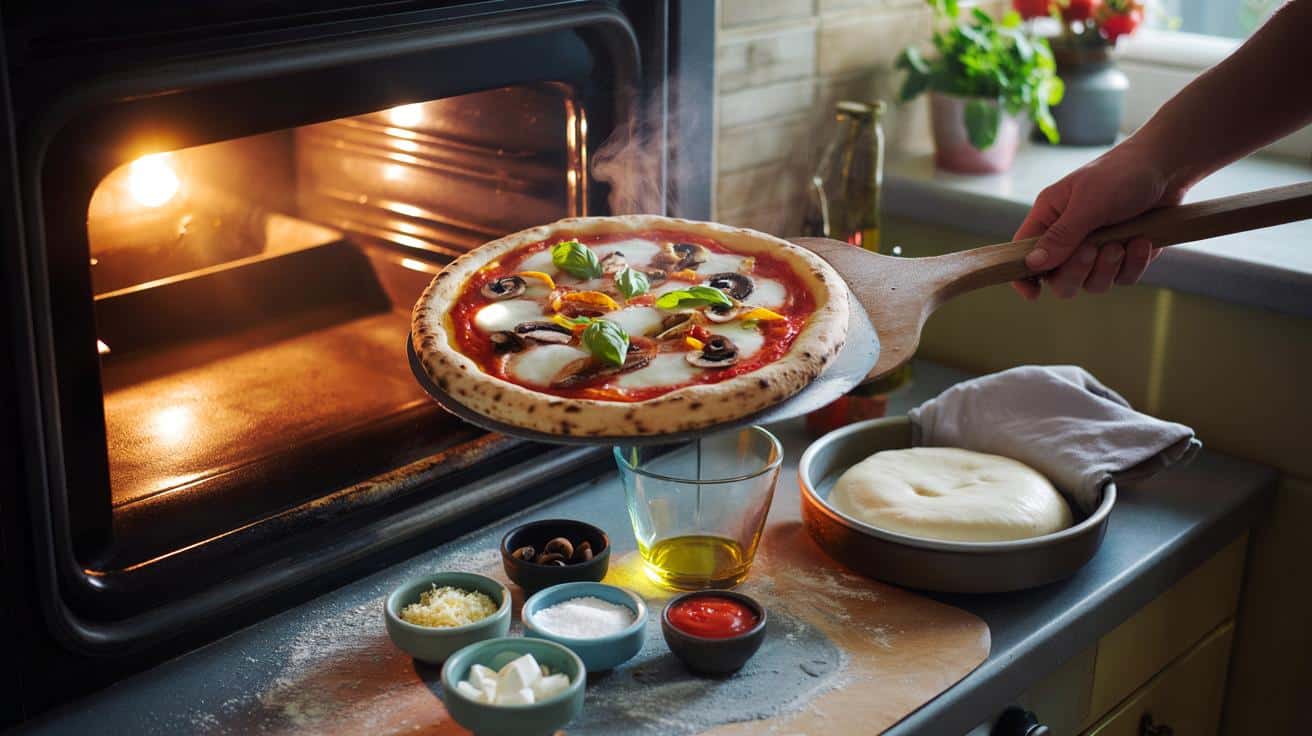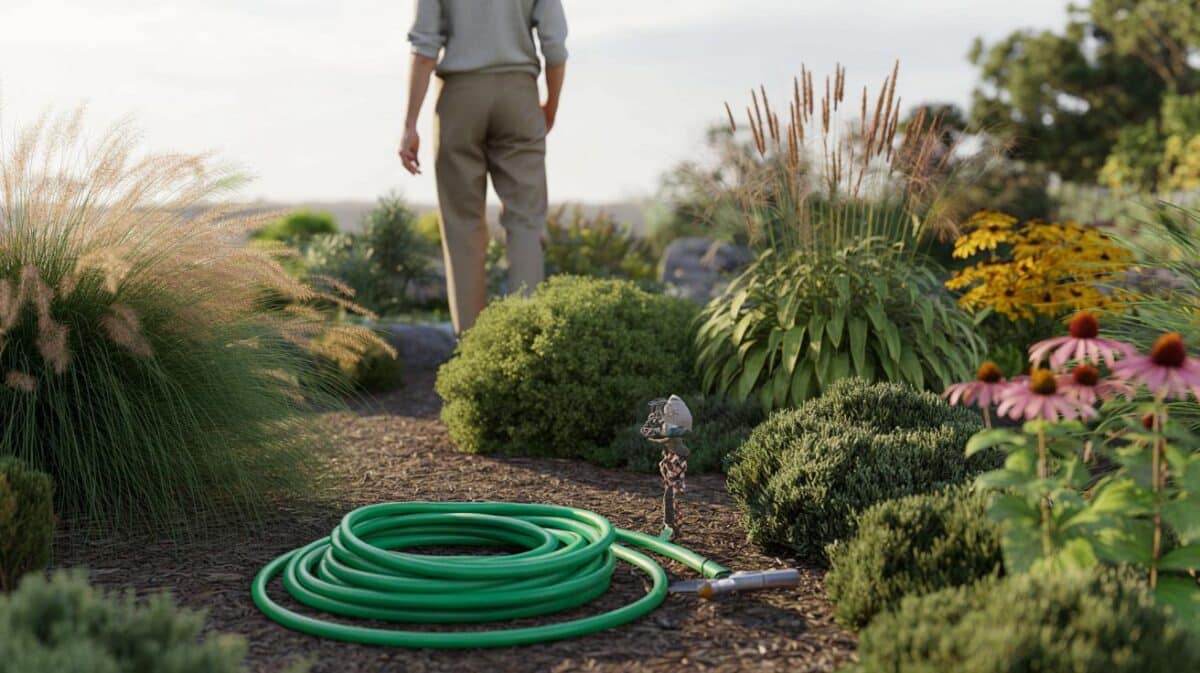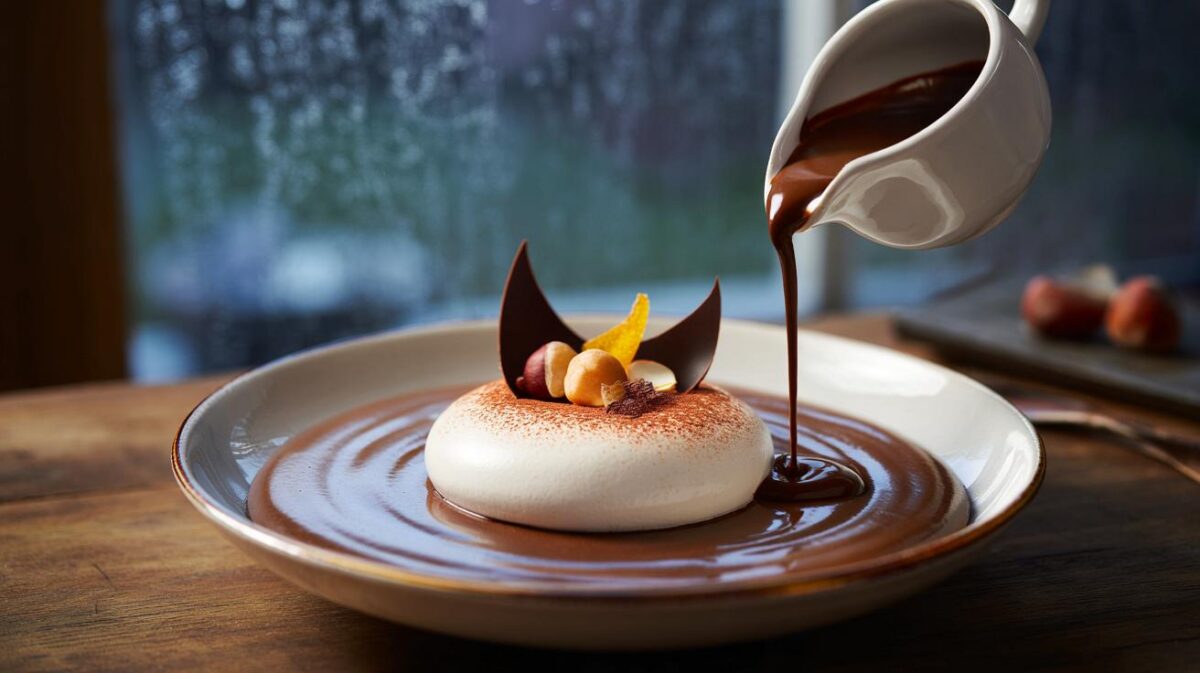Your kitchen still holds a trick that feeds everyone fast and well.
Across Britain, home cooks are turning to a five‑minute dough that rests for twenty, bakes in twelve, and lands on the table in time to save weeknights. No stand mixer. No heavy kneading. Just cupboard staples, a hot oven, and a promise: proper pizza with minimal effort and real flavour.
The weeknight no‑knead pizza that saves your evening
This fuss‑free method starts in a single bowl. You stir, you wait, you bake. The result brings a crisp base, a tender bite, and a thin, golden rim that takes well to cheese, veg, or whatever you have on hand. It suits families, flatmates, and anyone who wants a hot meal without the faff of a long rise.
Ingredients you likely already own
- 320 g strong white or plain flour
- 5–7 g instant yeast (one sachet)
- 200 ml warm water
- 1 tsp fine salt
- 2 tbsp olive oil, plus a drizzle to finish
- 160 g tomato passata or pizza sauce
- 200 g mozzarella, grated or torn
- Optional toppings: ham, mushrooms, olives, roasted veg, rocket
Method in real minutes
Add flour, yeast and salt to a mixing bowl. Pour in warm water and stir with a spoon until no dry patches remain. Mix in the olive oil. The dough will feel soft and slightly sticky. Leave it to rest for 20 minutes under a clean towel while you set the oven and prep toppings.
Dust the worktop, tip out the dough, and shape into a round. Roll or press it by hand to 28–30 cm. Lay on baking paper or a lightly oiled tray. Spoon on the sauce. Scatter the cheese. Add your favourites.
Turn your oven to its hottest setting. A blazing hot surface gives lift, colour and bite in minutes.
Heat, timing and texture
Home ovens vary, but heat is non‑negotiable. Aim for 230–250°C fan if your oven allows. Preheat a tray, steel or stone to store heat. Slide the pizza on and bake for 10–12 minutes until the rim blisters, the base freckles, and the cheese bubbles.
For a lighter crumb, extend the rest to 60 minutes at room temperature. For extra snap, dust the peel or paper with fine semolina. If you like a thin base, roll it slightly wider and keep the oven as hot as possible.
Rest 20 minutes for speed; rest 60 minutes for a lighter, airier rim. Both routes work on busy nights.
Why the no‑knead trick works
Kneading builds gluten with effort. Hydration and time do the same job quietly. Here, 200 ml water to 320 g flour sits at roughly 62.5 per cent hydration, which encourages gluten strands to form while the dough rests. Instant yeast starts fast, giving lift without a long prove. Olive oil softens the crumb and helps browning at high heat.
Fast flavour ideas that assemble in seconds
Five topping paths that keep the oven waiting
- Mushroom and Gorgonzola: pan‑sear sliced mushrooms, scatter with blue cheese, finish with thyme.
- Goat’s cheese, honey and fig: thin fig slices, soft goat’s cheese, a light drizzle of honey after baking.
- White potato and thyme: skip the tomato, use a thin layer of crème fraîche, add very thin potato slices and thyme.
- Roasted squash and ricotta: roast small cubes ahead, dot with ricotta and pumpkin seeds.
- Spinach and Parmesan: wilt spinach in a pan, squeeze dry, layer with mozzarella and shave Parmesan on top.
Make‑ahead and storage that suit your week
Plan once, eat twice
Keep raw dough in the fridge for up to 24 hours in a covered bowl; it will rise slowly and taste deeper. If you want true speed, par‑bake plain bases for 3–4 minutes, cool, then freeze them. Top straight from frozen and bake hot for 8–10 minutes. Leftover slices store well in the fridge for a day; reheat on a hot pan for a crisp base.
What it costs and how it stacks up against delivery
With supermarket prices, a 30 cm pizza lands close to £2.10, depending on your toppings. That compares with £10–£18 for delivery in many towns. Here’s a simple breakdown for a basic margherita.
| Item | Amount | Approx. cost |
|---|---|---|
| Flour | 320 g | £0.30 |
| Instant yeast | 5–7 g | £0.15 |
| Tomato sauce | 160 g | £0.25 |
| Mozzarella | 200 g | £1.20 |
| Olive oil and salt | — | £0.20 |
| Total | — | ~£2.10 |
Choose premium cheese or add meat and the price rises, but you remain well below takeaway. Energy costs vary; a 12‑minute bake at 240°C often still beats delivery fees and service charges.
Troubleshooting on the fly
- Dough too sticky: add 1–2 tsp flour while shaping; avoid over‑flouring or you’ll dull the crust.
- Dough springs back: let it rest 5 minutes, then shape again; gluten relaxes with time.
- Pale top: move the rack higher or finish under a hot grill for 30–60 seconds.
- Soggy centre: reduce sauce by a spoonful, drain watery toppings, preheat the tray longer.
- Dense rim: extend the rest to 45–60 minutes, or use a hotter surface such as a steel.
Small upgrades that pay off big
Texture boosters and finishing touches
Swap 1–2 tbsp of the flour for fine semolina to add a rustic crunch on the base. Brush the rim with olive oil before baking to deepen colour. After the bake, add peppery rocket, a few basil leaves or a squeeze of lemon over mushroom or white pizzas. A light rain of Parmesan adds savoury depth without weighing down the slice.
Nutritional notes and smart swaps
For a lighter slice, use half mozzarella and half a sharper cheese such as mature cheddar; you’ll need less for the same punch. Wholemeal flour up to 30 per cent adds fibre yet keeps the dough workable. Gluten‑free blends vary; aim for a mix that includes starches and a gum or psyllium for structure, and expect a slightly different bite.
When to use it, and when to plan ahead
Use this method when time is short, ovens run hot, and hunger won’t wait. If you want a complex, tangy crumb and leopard‑spotted rims, set aside a longer fermentation or try a poolish overnight. Both paths have a place in a busy week.
Kitchen safety and sharing tips
Handle the hot tray with care; it stores heat. Keep raw meat toppings thin and cooked through; add cured meats in the final minutes if you prefer a softer finish. Serve on a large board, slice into eight, and set out bowls of extras—chilli oil, lemon zest, fresh herbs—so everyone builds a slice they love.








